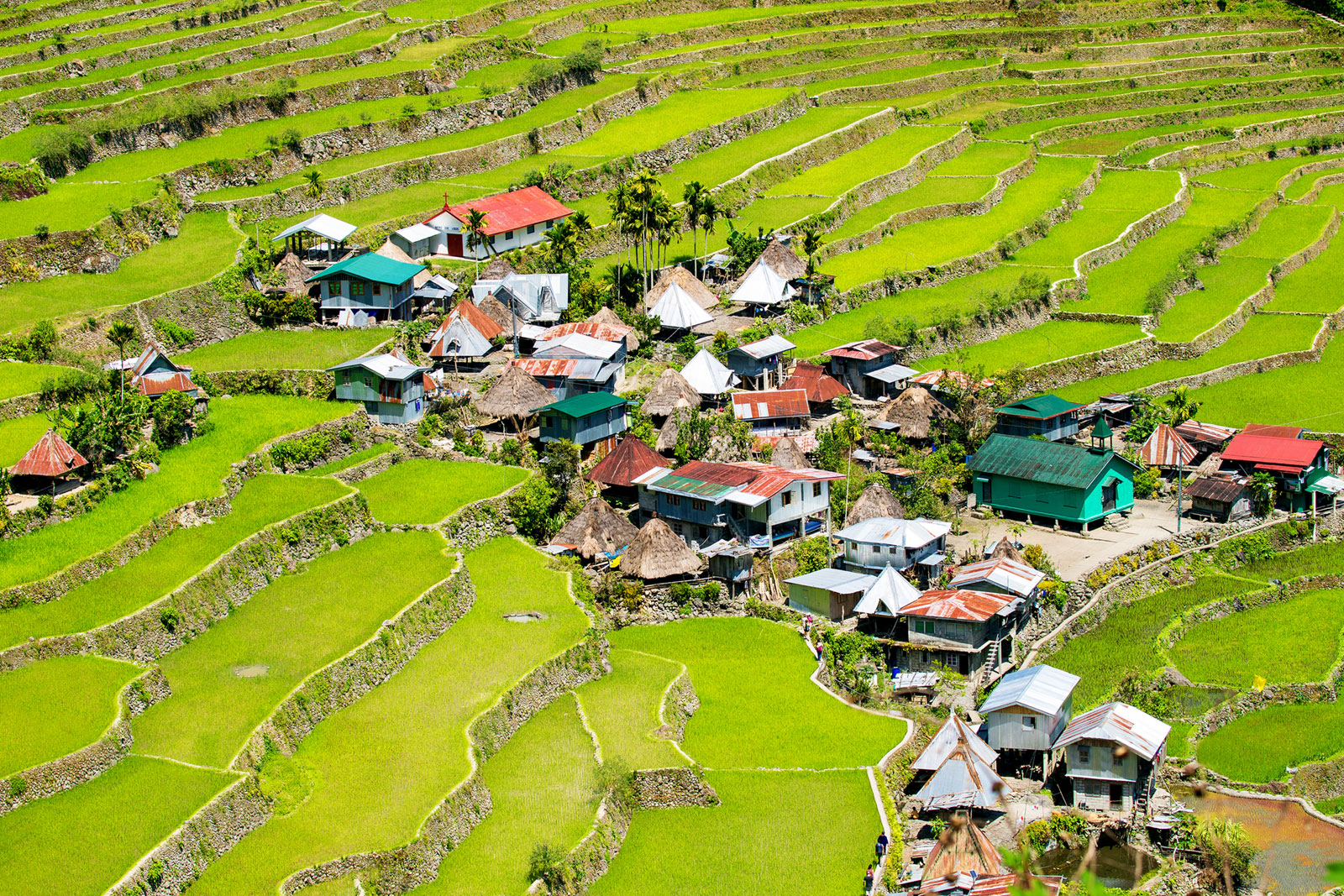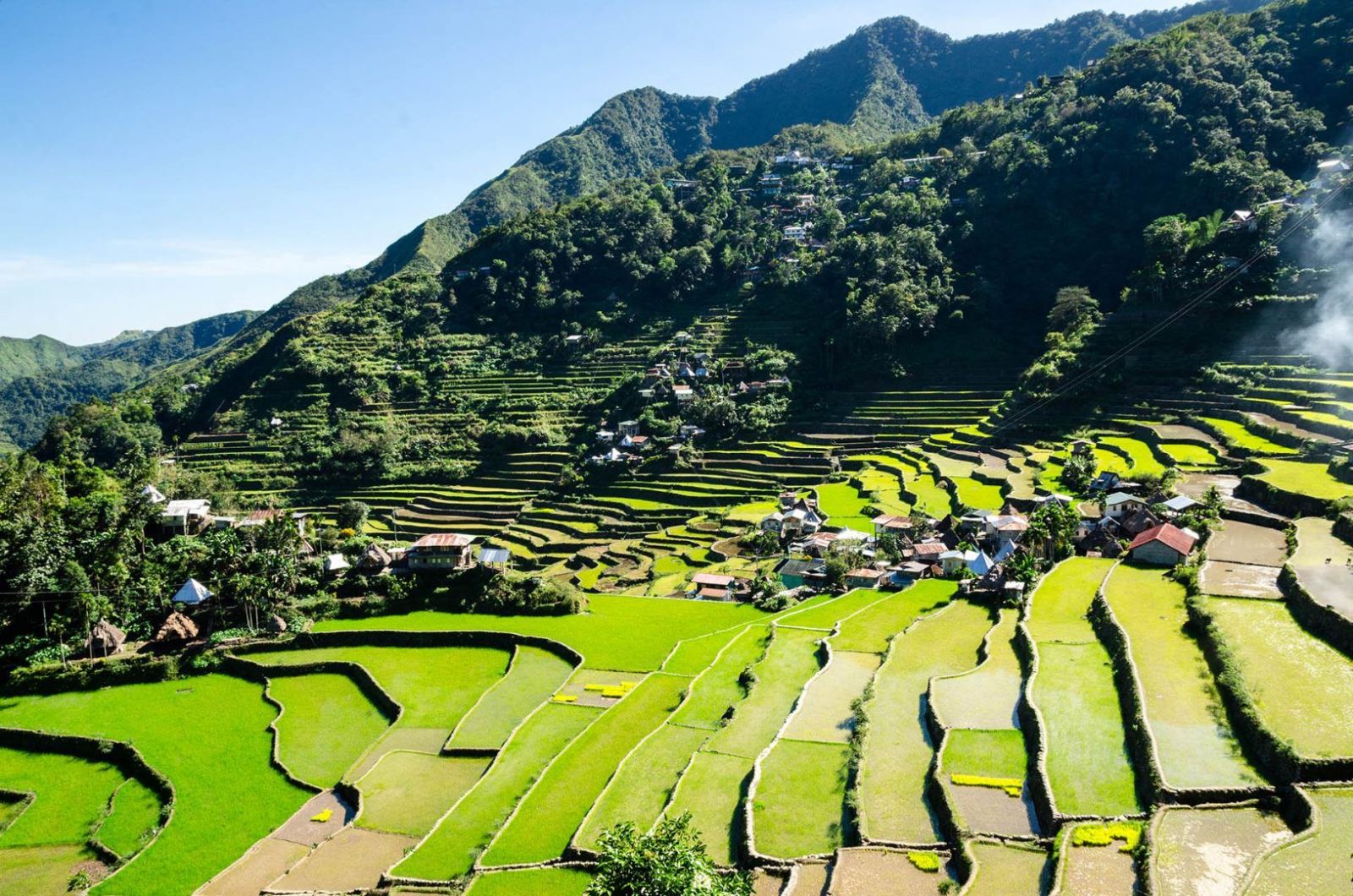Banaue is also home to the most picturesque and awe-inspiring rice terraces that stretch for miles into the horizon. Amongst the most popular are the Banaue Rice Terraces and Batad Rice Terraces, the latter being recognized as a UNESCO World Heritage site.

The rice terraces and its people coexist in a way that makes you appreciate the stunning view more and more as you take it all in. Knowing that the wide expanse of lined rice terraces all the way to the sky is the fruit of labor of the generations of Ifugao people’s drive and workmanship makes it more iconic and remarkable.

The Rice Terraces of the Philippine Cordilleras is an outstanding example of an evolved, living cultural landscape that can be traced as far back as two millennia ago in the pre-colonial Philippines. The terraces are located in the remote areas of the Philippine Cordillera mountain range on the northern island of Luzon, Philippine archipelago. While the historic terraces cover an extensive area, the inscribed property consists of five clusters of the most intact and impressive terraces, located in four municipalities.They are all the product of the Ifugao ethnic group, a minority community that has occupied these mountains for thousands of years.

The Ifugao Rice Terraces epitomize the absolute blending of the physical, socio-cultural, economic, religious, and political environment. Indeed, it is a living cultural landscape of unparalleled beauty. The Ifugao Rice Terraces are the priceless contribution of Philippine ancestors to humanity.

Reaching a higher altitude and being built on steeper slopes than many other terraces, the Ifugao complex of stone or mud walls and the careful carving of the natural contours of hills and mountains to make terraced pond fields, coupled with the development of intricate irrigation systems, harvesting water from the forests of the mountain tops, and an elaborate farming system, reflect a mastery of engineering that is appreciated to the present.

The terraces illustrate a persistence of cultural traditions and remarkable continuity and endurance, since archaeological evidence reveals that this technique has been in use in the region for 2000 years virtually unchanged. They offer many lessons for application in similar environments elsewhere.

The maintenance of the living rice terraces reflects a primarily cooperative approach of the whole community which is based on detailed knowledge of the rich diversity of biological resources existing in the Ifugao agro-ecosystem, a finely tuned annual system respecting lunar cycles, zoning and planning, extensive soil conservation, mastery of a most complex pest control regime based on the processing of a variety of herbs, accompanied by religious rituals.
According to UNESCO Organization













